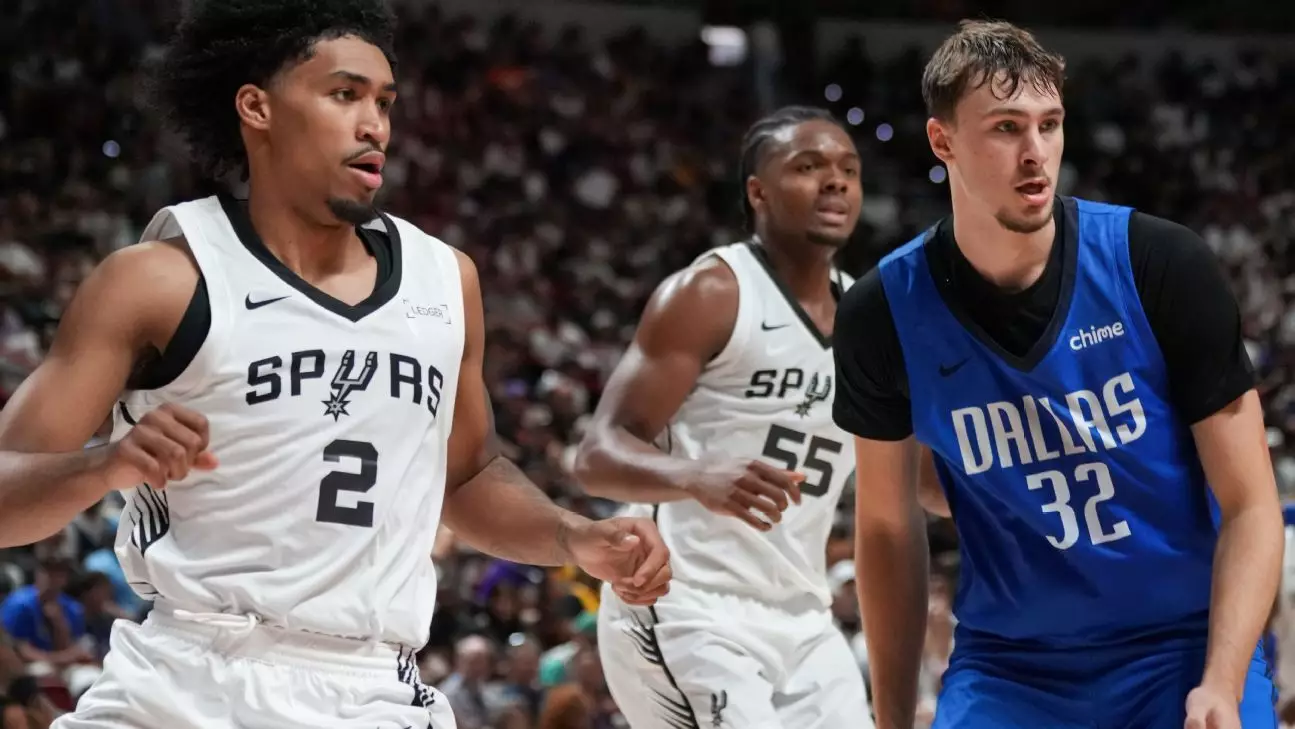The spectacle at the NBA Summer League last Saturday promised much and delivered even more—yet beneath the electrifying energy and youth-driven hype lays a complex narrative about expectations, realism, and the future of professional basketball. The highly anticipated face-off between the top two prospects of the 2025 draft, Cooper Flagg and Dylan Harper, illuminated the power of raw talent but simultaneously exposed the perilous pitfalls of idolizing promising young stars before they mature. The game showcased flashes of brilliance, but critical analysis reveals that enthusiasm must be tempered with an awareness of the journey ahead. While fans and analysts are dazzled by singular performances—Flagg’s 31 points and Harper’s resilient return—the truth remains that these young players are still on their ascent, deeply unfinished products, and their early showcases are, more often than not, misleading rather than definitive.
Overhyped Potential versus Grounded Reality
Few narratives in sports are as intoxicating—and as potentially dangerous—as that of prodigious young athletes heralded as the “future of the league.” Flagg, the No. 1 pick, demonstrated that he possesses undeniable scoring ability, adept at drawing fouls and showcasing exceptional athleticism with highlight-reel dunks. But such moments mask a troubling tendency to rely heavily on athleticism over fundamental skill. Similarly, Harper’s return after injury and his impressive debut, including a crucial block and scoring effort, inspire hope. Yet, what these displays reveal is less about the players’ readiness and more about a desire for narrative-driven hype. Youthful exuberance often conceals technical deficiencies, mental lapses, and the crucial need for consistent refinement. These are not future legends—they are talented novices genuinely deserving of patience and nurturing, not premature adulation.
The Illusion of Readiness and the Need for Constructive Skepticism
The atmosphere at Thomas & Mack Center was undeniably charged, with the presence not only of NBA luminaries but also celebrities and enthusiastic fans. Nonetheless, this environment can easily distort perceptions, creating an illusion of inevitability about their upcoming stardom. That Harper, for example, scored early and made impactful plays, is impressive; but one game does not guarantee sustained success. The same applies to Flagg’s scoring and aggressive drives—yet their struggle to consistently score, coupled with missed free throws and defensive lapses, are stark reminders of how much development is still required. The league’s early summer showings can often be mistaken for signs of future greatness, but more often they serve as cautionary tales about the overestimation of youthful promise. The brutal truth is that these prospects still need years of growth, discipline, and mental toughness—elements that cannot be rushed simply because of a few impressive highlights.
The Danger of Cultivating Starry-Eyed Expectations
The narrative spin surrounding young athletes tends to veer into exaggerated optimism, a phenomenon that risks setting both the players and their fans up for disappointment. Media and public excitement can inflate a player’s perceived potential, drawing attention away from the more gradual process of skill-building necessary for real NBA success. For Harper and Flagg, their performances are an essential step, but they also symbolize a broader tendency to prematurely crown future legends based on glimpses of brilliance. Such hype can pressure young players to perform beyond their current capacity, which might lead to heartbreak, burnout, or even doubt when the reality of the grind sets in. As advocates for a balanced perspective, we must resist the temptation to romanticize these performances and instead recognize their role as preliminary milestones—not definitive statements.
An Imperfect Road Ahead—The Need for Patience and Critical Support
The NBA is a league that demands resilience, consistency, and psychological toughness. It’s no longer enough for young athletes to impress with athletic feats; they must develop a nuanced understanding of their craft and mental resilience to endure the relentless pace of professional basketball. The early summer league showcases are thrilling, but they are merely the opening chapters of what promises to be a long, arduous journey. For fans who truly care about the sport’s integrity and growth, the focus should shift from sensationalism to constructive nurturing. We should celebrate their effort and potential, but also push for better support systems—coaching, mental health resources, and structured development—that help these players transition from promising prospects to established stars. Only with a well-balanced approach that combines enthusiasm with realism can the league cultivate genuine, sustainable greatness, rather than fleeting hype.
The story of Flagg and Harper is still unwritten. Their early flashes of brilliance serve as both an inspiration and a stark reminder: the road to NBA stardom is paved with hard work, patience, and humility—not just highlight reels and celebratory crowds. If we truly want to see the league evolve into a mature, competitive environment that elevates its young talents responsibly, it’s high time we temper our excitement and demand more from both the players and ourselves. The future may be bright, but it requires thoughtful nurturing—less hype, more care.


Leave a Reply